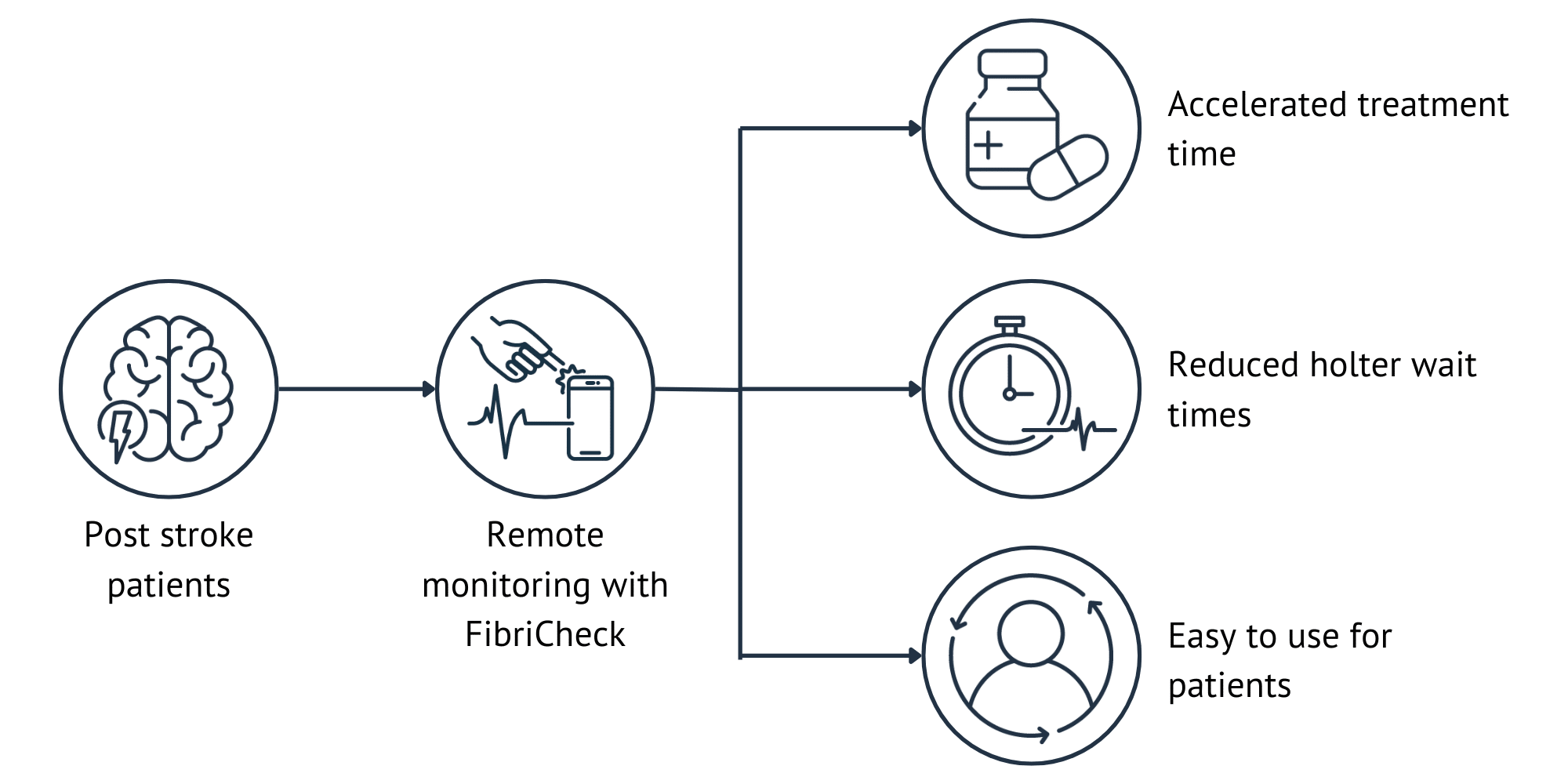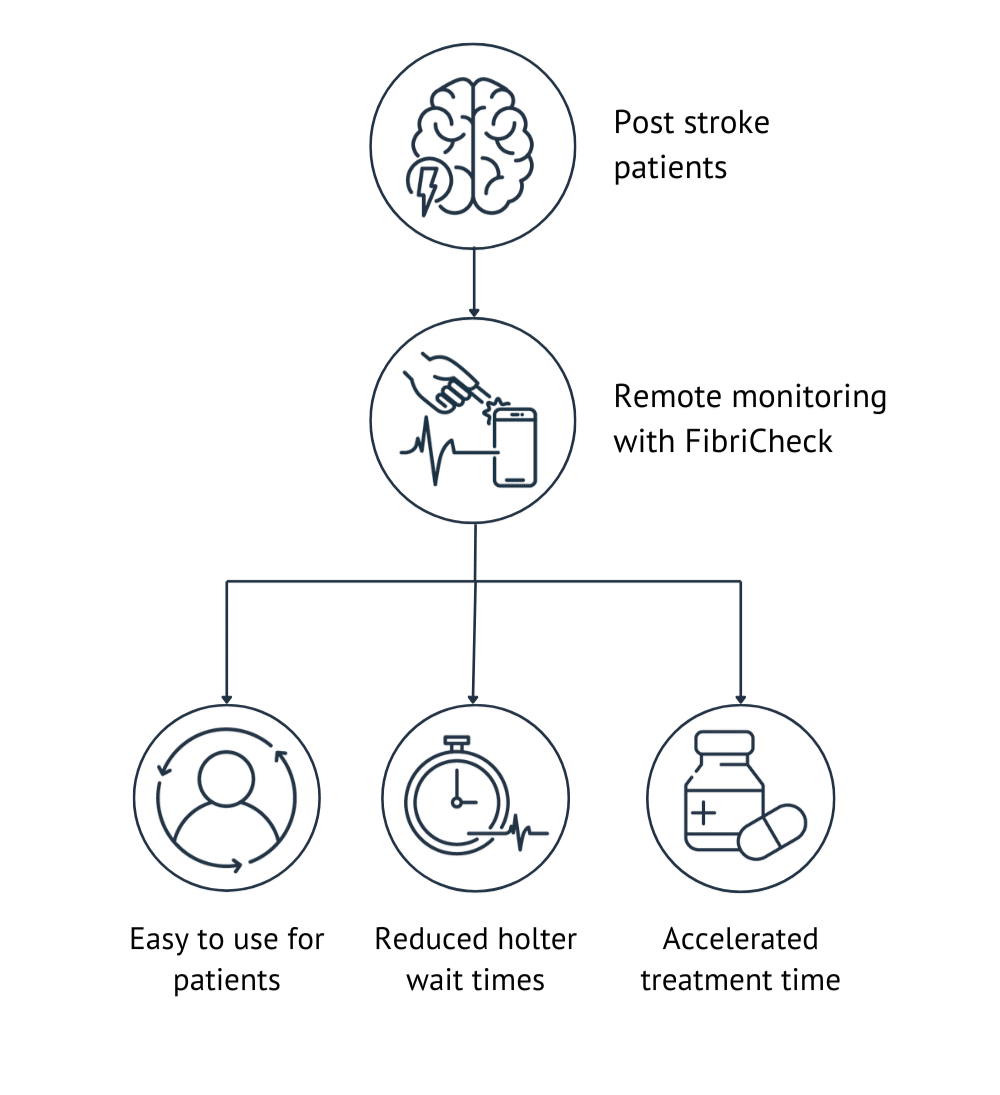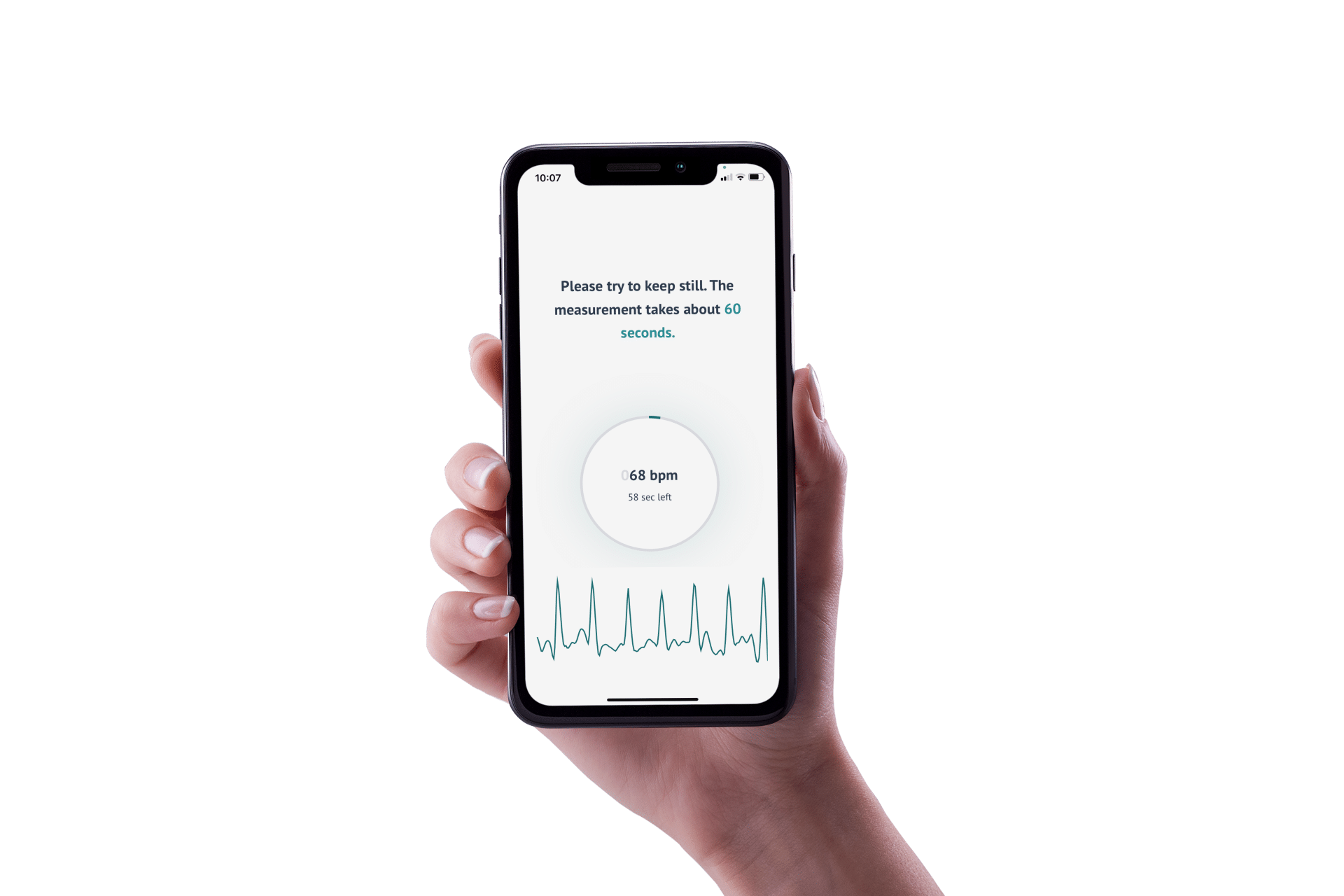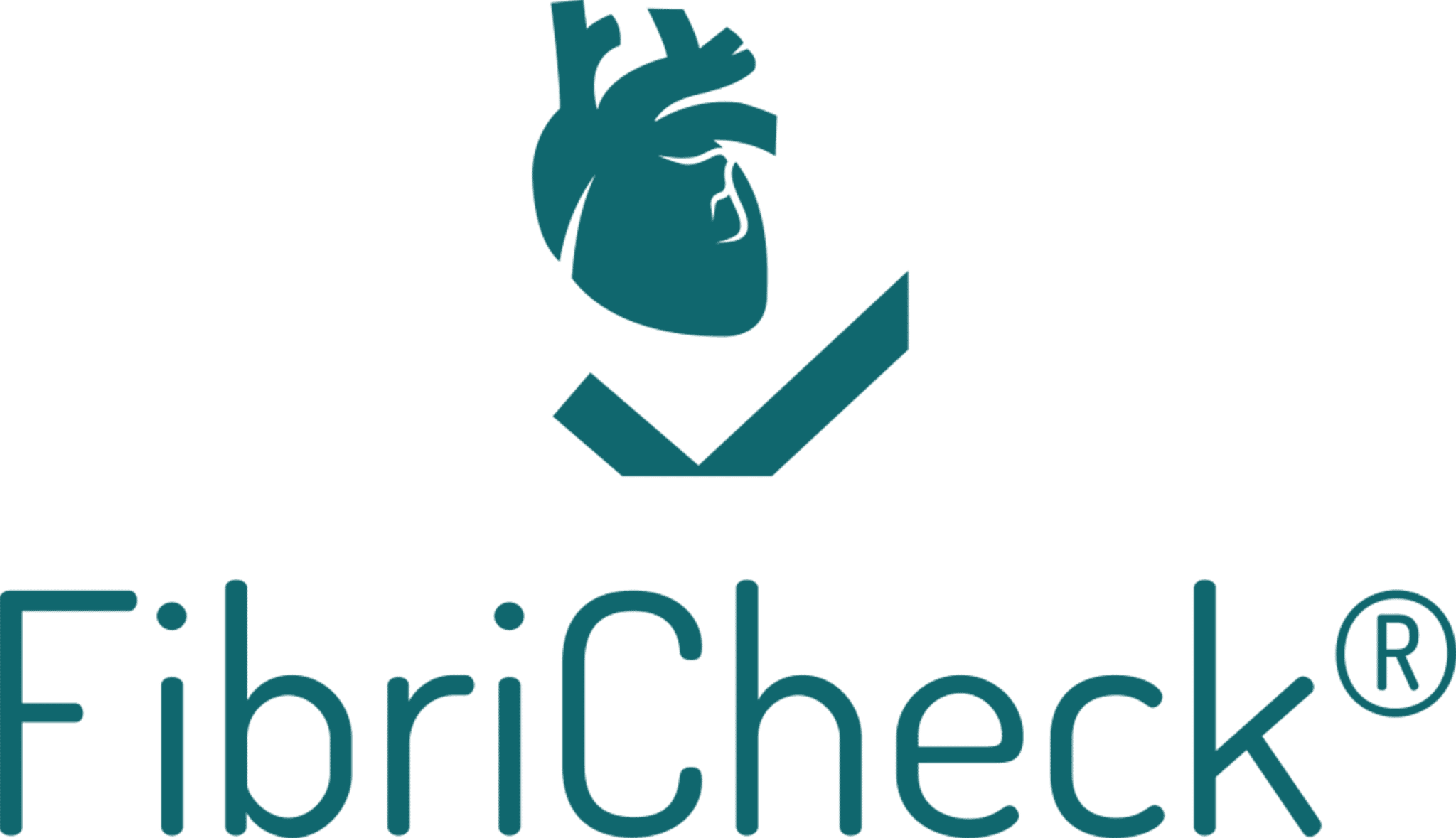
Key benefits
Enhanced care results
Reduced waiting times for Holters
Improved detection yield in cryptogenic stroke patients

Key benefits
Enhanced care results
Reduced waiting times for Holters
Improved detection yield in cryptogenic stroke patients
How does it work?
Objective: To implement the use of smartphone-based remote monitoring in order to reduce Holter wait times and to improve the detection yield in cryptogenic stroke patients.
Project outline: Over at Barking, Havering and Redbridge University Hospitals, FibriCheck is implemented so that post-stroke patients could monitor themselves at home to detect atrial fibrillation. The goal of this implementation is to accelerate care and to reduce the increasing waiting time for Holter devices. Both staff and patients experience improved care outcomes as FibriCheck made the post-stroke monitoring process more efficient. Because of the success of this implementation, this new way of working has become part of the hospital’s routine practice.
In collaboration with
Related resources
Reviews from professionals
“Before, a patient could have a secondary stroke while waiting for six months for a Holter. Now, the patient can have their AF detected, diagnosed and treated within 24-48 hours. It’s a phenomenal change.”
Dr. Devesh Sinha, Chief Clinical Information Officer and Clinical Lead Consultant Stroke at Barking, Havering and Redbridge University Hospitals NHS Trust.
Contact us today
And learn how we can enhance your healthcare outcomes

Other implementations
Post Cardioversion, Heart and Chest Hospital Liverpool
Remote PPG monitoring is highly effective in avoiding unnecessary patient re-attendance following DCCV, and provides significant cost, time, and environmental…
Post ablation, Essex Cardiothoracic Centre
FibriCheck-enabled, digital pathway effectively replacing Holters and 12-lead ECG examinations Remote insights into heart rate, rhythm, and symptoms efficiently detected…
Symptom monitoring, Stafforshire and Stoke-On-Trent
Decreased wait times for appointments Improved resource management in care Cost reductions Improved health outcomes




